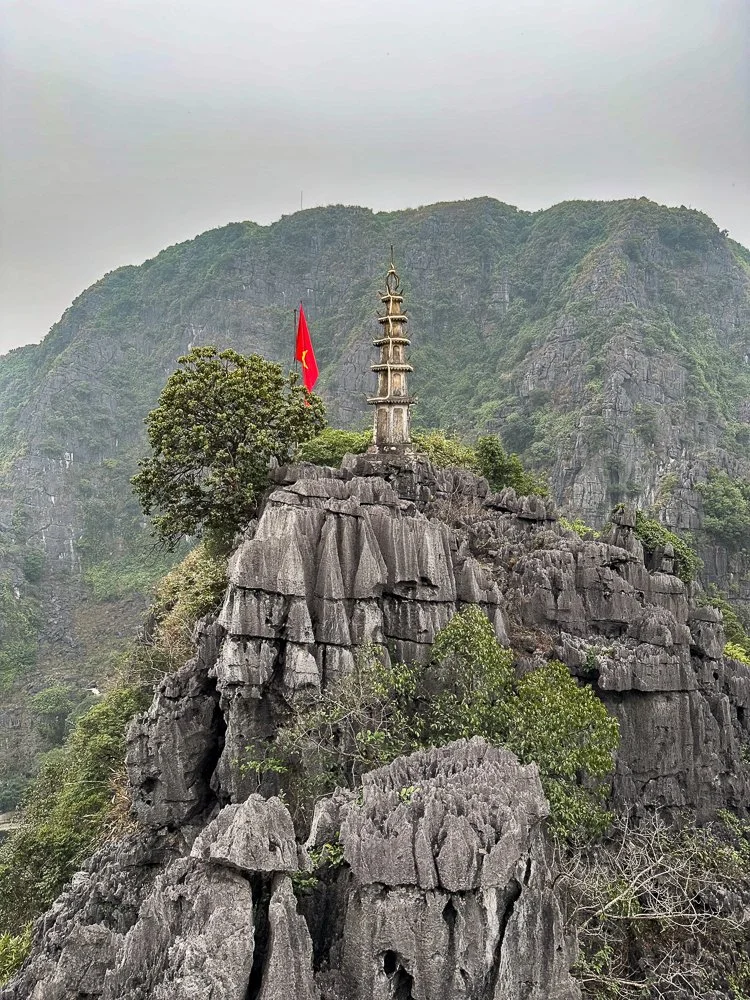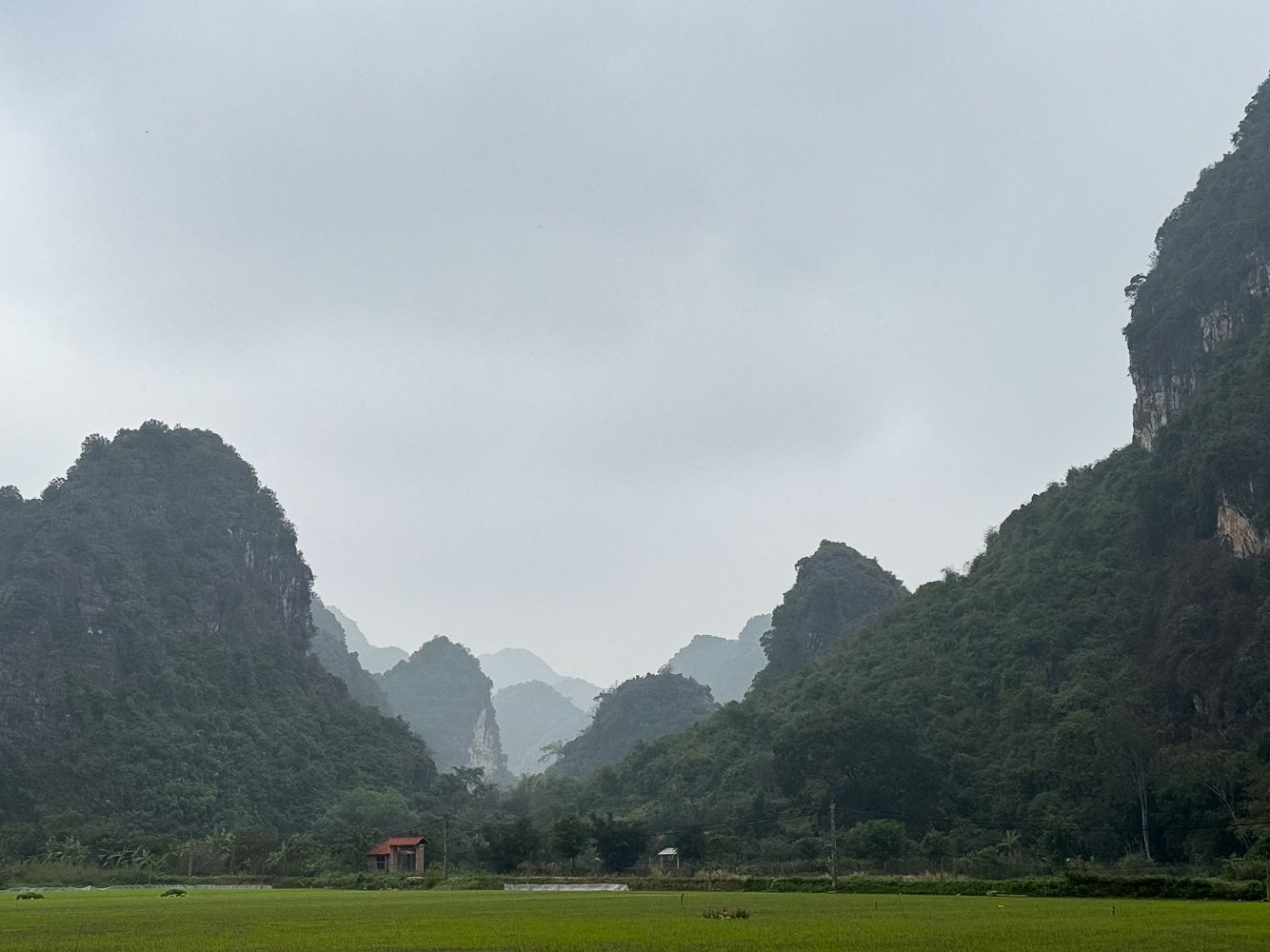Vietnam Travel Tips (a First Timer's Guide)
If you’re planning a trip to Vietnam, you NEED to read this blog before your trip. This guide covers what to expect, how to get around, and essential tips for before and during your visit.
Visa
Most travelers need a visa to enter Vietnam. We recommend submitting your visa application as soon as your travel dates are confirmed, and at the very least two weeks before your trip.
You can apply for your Visa online, here. The process is straightforward, and we had no issues with it. If you're a U.S. citizen, find the latest visa regulations here.
Language
Vietnamese is the official and most widely spoken language. English is somewhat spoken and understood, but it’s much more common in southern Vietnam. Regardless, we used Google Translate’s chat feature to communicate throughout the country. Make sure to download the Vietnamese language to your phone before leaving so you can use Translate in places without cell service.
Overall, we never found communication frustrating – and when words failed, a smile and laugh went a long way.
Etiquette
Clothing
Vietnamese culture tends to be modest, especially outside major tourist areas. While you’ll see shorts and tank tops in popular tourist locations, you’ll blend in better by wearing lightweight pants and breathable shirts.
When visiting cultural or religious sites like temples, museums, or My Son Sanctuary, you’ll need to cover your knees and shoulders. If you prefer wearing tank tops, pack a light scarf to cover your shoulders and be respectful.
Temples
When visiting temples in Vietnam, it’s important to be respectful and quiet. Always remove your shoes before entering the main worship area and avoid pointing your feet toward altars or religious statues.
Photography is sometimes restricted, especially near altars – look for posted signs or ask before taking pictures. Don’t touch statues or offerings and keep conversations low to maintain the peaceful atmosphere.
Public displays of affection
Public displays of affection are generally frowned upon in Vietnam. Kissing, hugging, or touching in public can be seen as inappropriate or disrespectful, particularly in rural areas.
Photographs
Always ask before taking someone’s photo. Just as you wouldn’t want a stranger photographing you without permission, neither do locals.
Some street vendors offer staged photo setups, like this bike full of conical hats, or fruit sellers who will let you borrow their baskets for a photo. These often come with an unspoken expectation of payment, so don’t assume it’s free.
Time
Vietnamese culture feels relaxed, like parts of Europe. Restaurant service is unhurried, and there’s never a sense of rush (unless you’re on the road). At the same time, people are punctual when it comes to tours, buses, and scheduled pickups.
It’s a great balance: a laid-back atmosphere with reliable timeliness when it matters.
Transportation
Driving
While we usually prefer driving ourselves when we travel, we don’t recommend it in Vietnam. Traffic in cities is dense, scooters dominate the roads, and what may seem like traffic “rules” back home often feel more like suggestions here.
Despite the chaos, we only saw two accidents during our trip – both involving tourists. It’s safer and less stressful to rely on local transportation options.
Taxis and Grabs
We preferred using the Grab app over traditional taxis since you can see the price you’ll pay upfront, without haggling. It works just like Uber or Lyft in the U.S. and lets you choose between a scooter or various vehicle sizes.
Grab was perfect for spontaneous rides—like the time we accidentally crossed the wrong bridge in Hội An and ended up on a different island!
Scheduled rides
Scheduling rides in advance is common in Vietnam. We arranged airport pick-ups and drop-offs, as well as rides around the country. You can easily organize rides through the Grab app, with your lodging host (if they offer it), or via a trusted travel agent. In popular tourist destinations, you’ll also find shops offering rides to popular destinations.
For scheduled rides in northern Vietnam, we used Vietsail Tours, and in the south, we relied on Culture Pham Travel.
Airport drop-offs
When getting dropped off at the airport, be sure to specify whether you need the domestic or international terminal and double-check that you’re at the right one. If you end up at the wrong terminal, don’t worry—there’s a free shuttle service that will take you to the other terminal.
Walking
For context, Ho Chi Minh City and Hanoi have larger populations than New York City. The streets are crowded with motor traffic, and sidewalks are often filled with parked scooters. In smaller towns, sidewalks are scarce, so it’s common to walk on the side of the road wherever you go.
Crossing the street
Traffic never stops, so to cross the street, you need to step into the flow of traffic in the direction you want to go. Walk at a steady pace between cars and scooters without stopping. Motorists will anticipate your movement and maneuver around you. You can also use hand gestures to signal your intentions.
Zach (who thoroughly enjoyed crossing the street here) compared it to using a crosswalk in an American city with aggressive drivers, while Meghann found it a bit intimidating. If you're nervous about crossing, wait for a break in traffic or follow others who are crossing at the same time.
Water
Tap water is not safe to drink, including ice in some places. To ensure that you’re drinking safe water, consider the following options:
Ask for drinks without ice
Buy bottled water locally
Use a portable water filter
Bring a water bottle with a built-in filter
If you do bring a filter, pack it in your carry on and keep it above freezing temperatures to ensure it works properly.
Don’t forget – use filtered water while brushing your teeth too!
Hot tea and coffee are safe to drink
Food
Food safety
Vietnam has all kinds of food, prepared in all sorts of settings. To ensure you’re eating safely, follow these tips.
Eat when and where others do
This is one of the most important tips! Eating at a place with high turnover means food is fresher and less likely to spoil.
We found that restaurant hours often differed from what was listed on Google Maps. Instead of planning where to eat in advance, it’s best to walk around and find places that are open and busy.
Cleanliness
We loved trying street food, but cleanliness can vary. Look for vendors who clean their prep areas, cover food to protect it from flies, and use separate gloves for handling money and preparing food.
Watch your food being cooked
Many smaller eateries and food stalls in Vietnam have open kitchens, allowing you to watch your food being made fresh to order. Look for places that use clean cooking oil and keep meat prep in designated areas.
Fruit and vegetables
Opt for fruits and vegetables that you can peel, as you can't be sure what kind of water they were washed with. Dishes like bánh xèo (crispy pancake) are often served with lettuce and herbs—limit your use of a few herbs and avoid the lettuce to be on the safe side.
Mangosteen
Longan
Food allergies
We found Vietnam to be very allergy friendly. Meghann has celiac disease and avoids gluten (found in wheat and some soy sauces). Due to the language barrier, asking about allergies in simple terms worked best. For example, asking if something is gluten-free led to confusion, but we always received a clear answer when we asked if something was made with rice or wheat. Most dishes are rice-based, and soy sauce is used sparingly, making it easy to eat gluten-free here.
For other allergies, use Google Translate to communicate or bring an allergy card written in Vietnamese. If you’re vegetarian, you’ll find more options near Buddhist temples or by looking for "chay" signs (vegetarian in Vietnamese).
Meghann was thrilled to be able to eat a crepe
Education
Before our trip, we bought this book to learn about Vietnamese food. It has a small section on celiac disease and food allergies, but we found the information on street food and fruit to be the most helpful. We loved it so much that we almost brought it with us, but instead, we took photos of the pages we found most useful to refer to during our trip.
Street food tour
Taking a street food tour soon after arriving in Hanoi was one of the best things we did in Vietnam. Not only was it a great experience, but it gave us tons of confidence in choosing what to eat for our entire trip.
We joined a group food tour with Hoan from Airbnb. The tour was fully customized to our group’s needs – Hoan accommodated Meghann’s celiac disease, another member’s desire to try duck (a Hanoi specialty), and someone else’s shellfish allergy.
Hoan took us to the best hole-in-the-wall spots and introduced us to local specialties. We dined on tiny plastic chairs, a signature feature of Vietnamese street food. Don’t be surprised if the food you try with Hoan rivals Michelin-star dishes!
After the tour, Hoan sent us a list of restaurant and dish recommendations for every city we visited next!
Medication
First aid
Medicine can be hard to find in Vietnam, so it’s best to pack your preferred painkiller like Tylenol, allergy medicine, such as Benadryl, and Dramamine if you get motion sickness. Include a few KN95 masks as well in case the of poor air quality as well.
Food sickness
Pack activated charcoal capsules to help an upset stomach, Imodium in case of traveler’s diarrhea, and electrolyte tablets to stay hydrated in case of dehyration.
Vaccinations
Check with the CDC and your doctor to determine if any travel vaccinations are recommended for your trip. Malaria pills are commonly prescribed for certain areas.
Money
Cash over card
Cash (Vietnamese dong) is more commonly used in Vietnam, particularly at smaller shops and in rural areas. While credit and debit cards are accepted at larger restaurants and stores, expect to pay a fee for card transactions.
Exchange currency
Check with your bank to see if they offer currency exchange before you leave. If not, use an ATM upon arrival. Stick to busy, well-lit ATMs and inspect for card skimmers before using them.
Tipping
Tipping is not traditionally expected in Vietnam, but it’s appreciated in some service settings, particularly in tourist-heavy areas. You may want to tip at higher-end restaurants, spas, salons, for Grab rides, personal drivers, and tour guides.
Bartering
Bartering is common practice in markets across Vietnam. Don’t be afraid to negotiate – politely – but do expect to pay a “foreigner fee” (paying more for goods than locals would).
Cell service
Buy a prepaid SIM card to for cell service. Airalo works best in Vietnam.
You should also minimize your use of unsecured public Wi-Fi access and avoid accessing sensitive information on public networks.
Apps
Translation
We mainly used Google Translate to communicate with non-English speakers, but also had Apple’s Translate app as a backup. Both apps feature a conversation mode, allowing you to chat back and forth in different languages.
Additionally, both apps have a camera mode that translates text in real-time or from photos. This was especially helpful in museums and public spaces where signage wasn’t translated.
Currency
We used our iPhone’s built-in calculator to quickly calculate exchange rates, but if you don’t have this feature, the XE app is a great alternative. Transportation
Ridesharing
Grab is the most popular way to hire rides throughout Vietnam.
Google Maps
Google Maps is essential for getting around. You can also download maps for offline use, which is handy if you don’t have access to mobile data.
Search the blog for more adventures! Try searching for topics such as “backpacking”, “waterfalls”, or “national parks”.

































